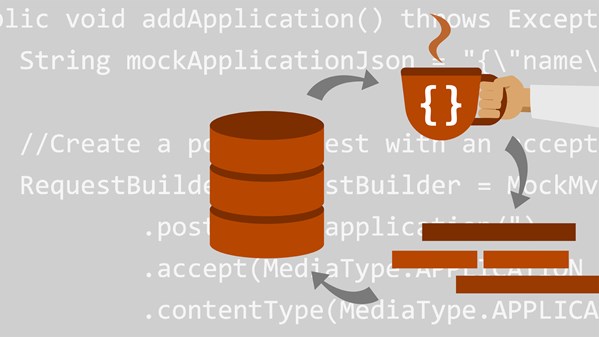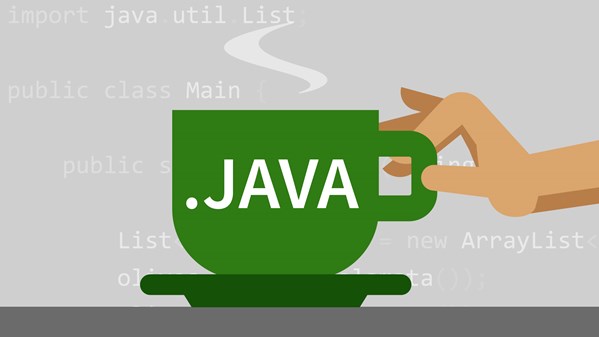
Developers sometimes struggle to see their apps as attackers do. They don't automatically recognize the vulnerabilities. That is where frameworks like Spring Security come in. Spring Security offers built-in authentication and authorization features for securing your apps and services, and easy ways to extend the framework to maximize its value. Join security architect Frank Moley, as he shows how to secure your Java projects with Spring Security, LDAP, Active Directory, and WebFlux. Plus, learn how to use Spring Security to set up your own OAuth servers to secure your apps and services.
Learning objectives :
- Authentication vs. authorization
- Implementing in-memory and JDBC authentication
- Form-based authentication
- Building login and logout pages
- Configuring LDAP authentication
- Leveraging OAuth 2
- WebFlux basic security

Want to get more out of the Java language and platform? In this platform- and framework-neutral course, instructor Bethan Palmer digs into some of the language’s more advanced features, helping you expand your programming skills as she equips you with techniques you can use when building applications anywhere Java is used: in web, mobile, and desktop applications. Bethan covers a variety of topics, including generics, working with the Collections Framework, and functional programming. Plus, learn about I/O in Java, working with files and directories, and structuring applications using the modular system available in Java.
Learning objectives :
- Installing the NetBeans IDE
- Using generic methods in Java
- Using wildcards in generic programming
- Implementing a queue with a LinkedList
- Functional programming in Java
- Multi-threading
- Working with I/O in Java
- Managing files and directories

The Java Persistence API (JPA) is the standard for mapping Java objects to relational databases. JPA provides several advantages over traditional data access methods like Java Database Connectivity (JDBC). In this practical course, Kesha Williams discusses these advantages and acquaints you with the basics of JPA, entity management, transaction management, and relationship mapping. Upon completing this course, you'll be equipped with a firm understanding of JPA and persisting data in Java enterprise applications.
Topics include:
- What is persistence?
- JPA configuration and entities
- Benefits of JPA over pure JDBC
- Managing entities with the EntityManager API
- Creating, persisting, reading, updating, and deleting objects
- Managing transactions
- Advanced mapping techniques using annotations
- How to map relationships

If you want to build applications for mobile devices, desktop computers, or the web, you need to know Java. This course provides the foundation for learning Java SE (Standard Edition), so you can build your first apps or start exploring the language on your own. Author David Gassner shows how to install Java and the IntelliJ IDEA IDE, and start working with variables, data types, keywords, and other critical language components. He also helps you control program flow with conditional logic and loops, store data with the Java Collections Framework, and understand how Java implements object-oriented coding principles such as inheritance and polymorphism.
Topics include:
- Understanding the history and principles of Java
- Installing Java, IntelliJ IDEA, and BlueJ
- Creating a Java project
- Working with variables, values, and expressions
- Working with object data types
- Building, comparing, and parsing strings
- Debugging and exception handling
- Creating loops and reusable code
- Passing arguments by reference or value
- Using simple and complex arrays
- Creating custom classes
- Understanding inheritance and polymorphism
- Managing files with Java libraries
- Documenting code with Javadoc
- Packaging classes in JAR files

Learn how to choose the right Java API for your application and get started coding with XML and Java. In this course, author David Gassner shows you how to read and create XML strings and files, decide whether to use a streaming or tree-based API, and find out which APIs are compatible with Android. Plus, discover how to use both standard APIs that are included with the Java SE and EE distributions, such as DOM, SAX, and JAXB, and learn about popular open-source libraries such as JDOM and the Simple XML Serialization framework.
Topics include:
- Choosing a Java-based XML API
- Reading XML as a string
- Comparing streaming and tree-based APIs
- Parsing XML with SAX
- Creating and reading XML with DOM
- Adding data to an XML document with JDOM
- Reading and writing XML with StAX
- Working with JAXB and annotated classes
- Comparing Simple XML Serialization to JAXB

Topics include:
Spring core changes
Spring web changes
Spring test changes
Spring Boot changes

The Spring developers are always listening to feedback and feature requests. They have responded with Spring 5, a version that's packed with exciting new enhancements. This course gets you up to speed with the latest and greatest in Spring Framework 5.0 and Spring Boot 2.0, including reactive Spring and Spring Actuator. Instructor Frank Moley covers the new support structure for Java 8 and Java EE 7, and explains which packages, classes, and methods have been removed. Next, learn about the changes to Servlet 3 and 4, data binding for immutable objects, and the spring-web-reactive module for reactive programming. Then explore the integration for Junit Jupiter, parallel test execution, and mock environments. Finally, review the changes in Spring Boot, including third-party library upgrades and Spring Boot Actuator for monitoring the health of production applications.
Topics include:
- Spring core changes
- Spring web changes
- Spring test changes
- Spring Boot changes
